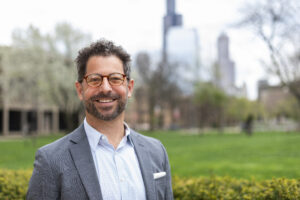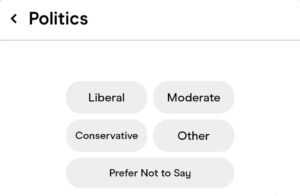by Michael Neary of StreetWise
Sept. 10, 2008 — The closing of Austin High School a year ago has left families in the neighborhood with stark choices, says a parent in Chicago’s Austin neighborhood, who asked to be identified only as “Johnny.” The only high schools with traditionally broad curricula that children can now attend, according to Johnny, require the crossing of gang boundaries into territories rife with danger for teens.
“Our kids could not go to another school without being shot, robbed or beat up,” said Johnny, who’d stepped away from a small neighborhood gathering across from the old high school building on a sunny August afternoon.
In the sort of violent climate Johnny described — a climate also burdened with mounting economic pressures — members of Parents United for Responsible Education (PURE) want to try to alleviate one source of stress: school closings. The organization has called for a moratorium on closings, with its executive director citing the housing foreclosure crisis, public housing relocation and the upsurge in school-aged violence as disruptions that already make children’s lives volatile.
“There seem to be so many pressures that have been building over the years,” said Julie Woestehoff, executive director of PURE. “Every time a child moves from one school to another, several months [of learning are] lost.”
Many children’s lives had already been disrupted, advocates say, when their families moved as part of the Chicago Housing Authority’s Plan for Transformation. The plan involves relocating families in public housing from moribund high-rises to temporary housing or to permanent mixed-income apartment buildings.
Community advocates contend that city-wide initiatives such as the Plan for Transformation and Renaissance 2010 , despite their goals of improving the city, can make individual residents feel powerless. Renaissance 2010 targets the closing of apparently low-performing Chicago public schools and the opening of replacement institutions, such as charter schools. These schools often have restricted access for students, such as waiting lists and admission via lottery.
“This is about people being pushed already with their housing,” said Andrea Lee, education initiative coordinator of Grand Boulevard Federation at 4859 S. Wabash Ave. “It’s the students now being pushed around… it’s just everything coming crashing down at the same time.”
Donald R. Moore called last spring’s plan by Chicago Public Schools to close 18 schools unprecedented — because of its size — and said the CPS Board of Education did an inadequate job of considering testimony from local communities.
“They violated all their own stated rules about taking the testimony of the public seriously,” said Moore, the executive director of Designs for Change , at 814 S. Western Ave. He argued that CPS was closing down neighborhood schools and replacing them with schools such as charters that do not have local school councils.
“It’s their decision to disrupt, in several cases, schools that were doing extremely well with schools that don’t have elected school councils,” he said.
Woestehoff agreed that it’s tougher for parents to hold the new charter schools accountable for a problem — such as an expulsion — than it is at regular neighborhood schools.
“If this happens at a charter school, you have no place to go. There’s nobody who’s the boss of these schools,” she said, noting that charter schools report to the Illinois State Board of Education, but not directly to CPS.
When to close schools
According to CPS spokesperson Malon Edwards, the district closes schools only as a last resort.
“It’s not the first option,” he said. “It’s the last.”
Edwards said CPS does not possess a list of criteria to determine whether or not schools close, since the cases vary from school to school. He did say that low enrollment and underperformance generally play large roles. Regarding underperformance, Edwards also contended that officials try to detect signs of trouble before shuttering a school.
“Once we see a school go towards chronic underperformance, we try to put things in place to make sure that doesn’t happen,” he said. “When they need reading, we hire a reading consultant.”
Edwards also addressed low enrollment, a concern underlined by CPS data recently published in the Chicago Tribune. According to the data, five of seven regions experienced declining enrollment between the 2001-02 and the 2007-08 school years. The West and South sides of the district dropped the most, from a combined 166,428 students to 138,885.
“We want to make sure that our schools have efficient student population numbers so the cost of upkeep is being used efficiently,” said Edwards.
Sometimes the condition of the school buildings also prompts a closure or relocation. CPS announced the closure of Attucks Elementary School about one month before the first day of this fall’s classes, citing problems with the heating system. Staff and students will be relocated to Farren Fine Arts Elementary School — which had itself been closed down — about 13 blocks away. Pending CPS Board approval at the time of this writing, the school will be renamed Attucks Elementary, according to Edwards.
The announcement regarding Attucks descended after CPS’s proposal in the spring of 2008 to close 19 schools. Eighteen ultimately closed.
The lone school of the 19 that stayed open was Abbott Elementary, at 3630 S. Wells St., which harbors a charter school (in addition to its regular school) that advocates say may have played a role in CPS’s decision to retain the school. Edwards said that a hearing officer’s recommendation to keep the school open, coupled with concerns voiced by parents, ultimately swayed CPS. He said officials were persuaded by testimony, but he did not elaborate on the specific elements of the testimony they found most compelling. At least one person finds the reticence of CPS in this case troubling.
“CPS never made public why they took Abbott School off the closing list,” said Lee.
Listening to parents
Edwards cited the Abbott decision as an example of CPS’s willingness to consider other viewpoints, including those of parents, and to weigh them in the decision-making process. Another example he mentioned involved De La Cruz Elementary, at 2317 W. 23rd Place, originally slated to be consolidated with Finkl Elementary School, at 2332 S. Western Ave. CPS decided to close De La Cruz entirely when parents said they would prefer the school to be “phased out” altogether, according to Edwards.
“We listened to parents and we listened to their concerns,” he said.
But that’s not the way some school advocates — and some parents — characterize CPS’s interaction with local communities. Lee said that at a community meeting about the Attucks decision, a parent was in tears over her children’s need to attend another school, just a few years after they’d been transferred from the closed-down Raymond Elementary School. Now, Lee said, Raymond is about to reopen as a charter school.
That Raymond was not designated as the school for children relocating from Attucks also disturbs residents, according to Lee. Raymond, at 3663 S. Wabash St., is close to Attucks, which is at 3813 S. Dearborn St. Farren School, on the other hand, is at 5055 S. State St.

![Reblog this post [with Zemanta]](http://img.zemanta.com/reblog_e.png?x-id=5cd014d7-ab55-4669-8bee-acdbfa1d023a)





Be First to Comment